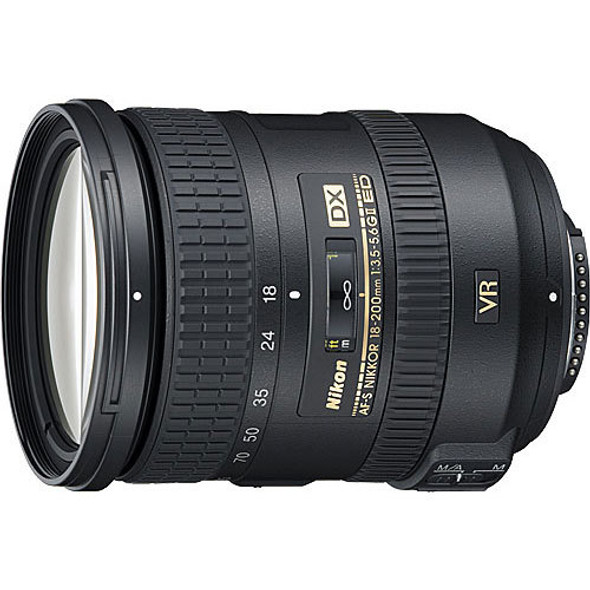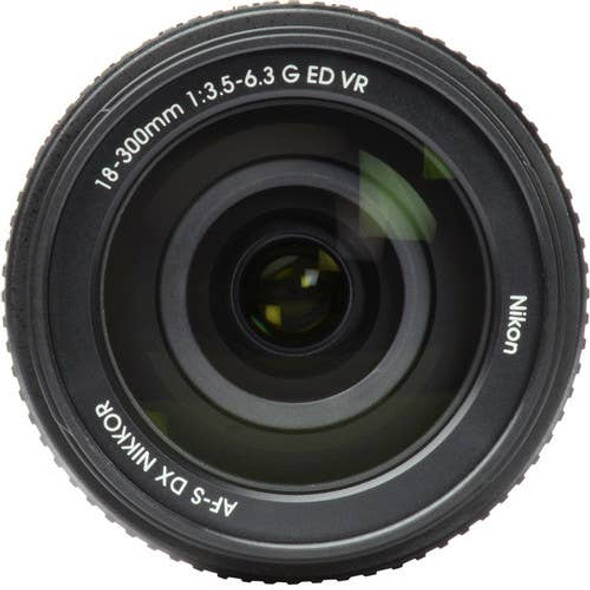Nikon
Nikon AF-S NIKKOR 80-400mm f/4.5-5.6G ED VR Lens
- SKU:
- JAA817DA
- Shipping:
- Calculated at Checkout
Description

This lens features an extensive zoom range of 80-400mm (DX equivalent: 120-600mm) that encompasses both portrait and long-reaching telephoto focal lengths to suit work with a variety of subjects. Capture portraits with softly blurred backgrounds and get close-up telephoto shots of faraway subjects with or without a tripod.
The lens construction integrates one super ED (extra-low dispersion) and four ED glass elements to help minimize chromatic aberrations throughout the zoom range and contribute to higher image sharpness, clarity, and color fidelity. The Nano Crystal Coat reduces surface reflections, helping to prevent lens flare and ghosting for greater contrast and light transmission.
Built-in Vibration Reduction image stabilization compensates for the effects of camera shake up to the equivalent of four shutter speed steps. A dedicated VR setting for tripods is available for producing the sharpest imagery possible without countering the effects of the image stabilization system.
In addition to regular autofocus and manual focus, two other focusing modes are available: A/M (Auto-Priority Manual Mode) enables an easy transition from autofocus to manual during AF operation, while M/A (autofocus with manual override, MF priority) allows switching from AF to MF with virtually no lag time by turning the focusing ring. Transitioning between these focusing modes can be done quickly and precisely.
The SWM (Silent Wave Motor) focusing system uses ultrasonic vibrations to provide quick, quiet, smooth and precise auto focusing performance that is ideal for use in video and subject-tracking. Internal focusing maintains an overall compact lens form-factor, enables faster performance, and allows for a closer focusing distance.
Key Features
- Nikon F Mount
- FX Format Compatible
- 120-600mm Equivalent in DX Format
- Aperture Range: f/4.5-40
- Vibration Reduction Image Stabilization
- 5 ED Elements, Nano Crystal Coating
- Silent Wave Motor and MF Override
- Internal Focusing Mechanism
- Nine-Bladed Diaphragm
- Accepts 77mm Filters
80-400mm Focal Length
Wide zoom range enables portraits with softly blurred backgrounds and close-up telephoto shots, including macro work at a minimum focus distance of 5.7'
ED Glass Elements
One super ED (extra-low dispersion) and four ED glass elements help reduce chromatic aberrations throughout the zoom range and produce higher image sharpness, clarity, and color fidelity
SIC and Nano Crystal Coatings
The multilayer Super Integrated Coating is applied to the individual optical elements, as is a Nano Crystal Coat to minimize surface reflections across a wide range of wavelengths and prevent lens flare and ghosting resulting in greater overall contrast and light transmission
Vibration Reduction
Built-in image stabilization counteracts the effects of camera shake, allowing you to shoot at shutter speeds up to four times slower than would otherwise be possible. A dedicated VR setting for tripods gives you the sharpest imagery possible without working against the image stabilization system
Focusing Modes
In addition to regular autofocus and manual focus, two other focusing modes are available: A/M (Auto-Priority Manual Mode) enables an easy transition from autofocus to manual during AF operation, with a low possibility of unintentional switching, while M/A (autofocus with manual override, MF priority) allows switching from AF to MF with virtually no lag time by turning the focusing ring letting you seamlessly switch to fine manual focusing while looking through the camera's viewfinder. Transitioning between these focusing modes is controlled by a rocker switch on the lens barrel for quick switching and greater precision depending on the subject matter being photographed
SWM (Silent Wave Motor)
Utilizes ultrasonic vibrations to provide quick, quiet, smooth and precise auto focusing performance that is ideal for use with video and subject-tracking applications
Internal Focusing
Employed in order to maintain an overall compact lens form-factor and to produce overall faster performance. The lens will not change in size during AF operation, enabling a closer focusing distance without the danger of damaging the lens' front element. Distance information is displayed on an analog scale through a sealed window.







